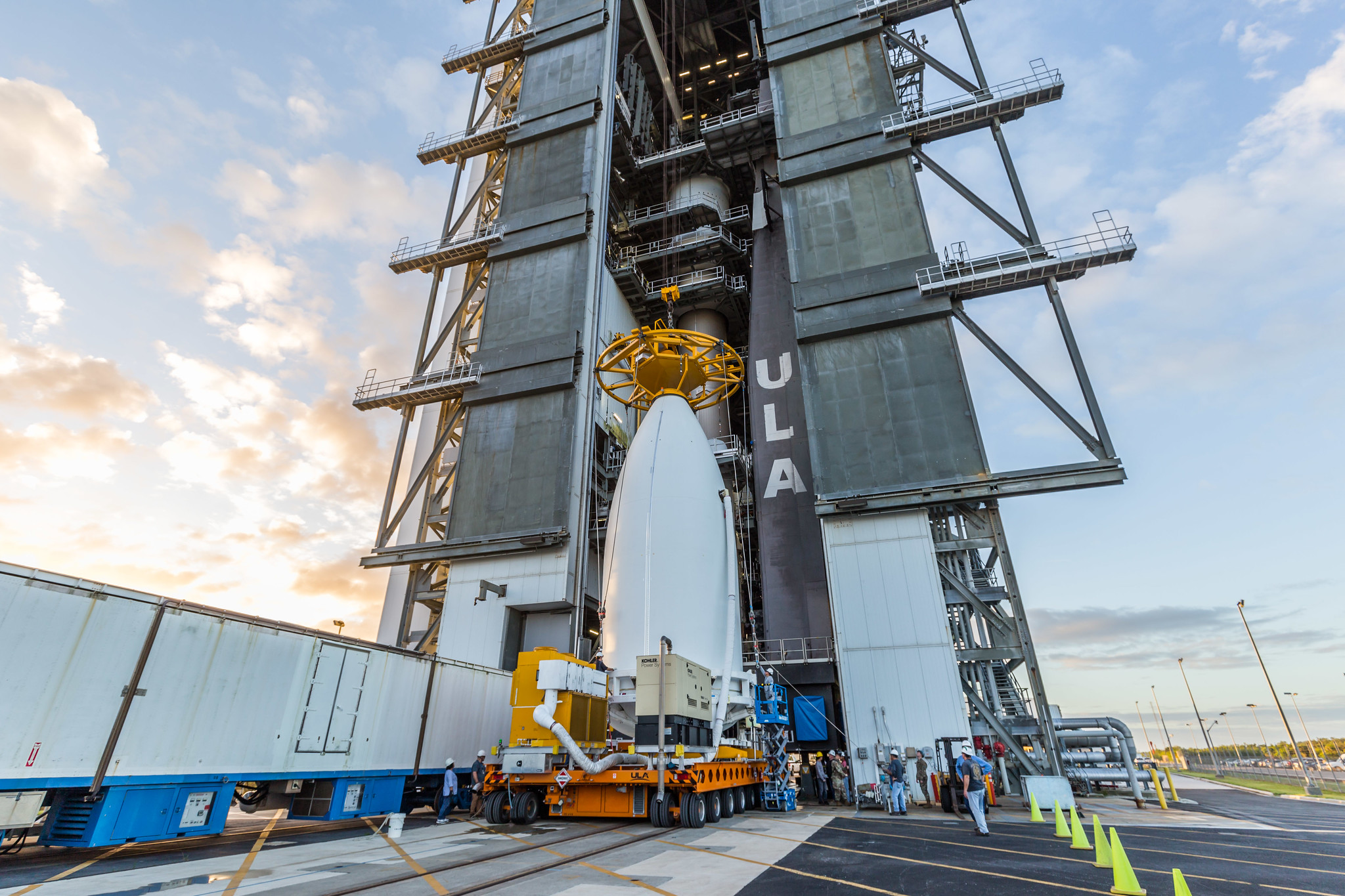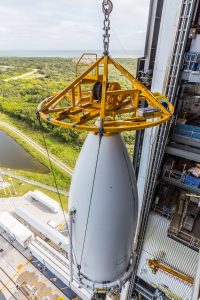
NASA’s Laser Communications Relay Demonstration (LCRD) moved one step closer to launch on Monday, Nov. 22, after a team of engineers fastened the payload fairing containing its host satellite to a United Launch Alliance (ULA) Atlas V 551 rocket. Launch is now targeted for Dec. 5, 2021, due to inclement weather during launch vehicle processing.
Teams at Astrotech Space Operations Payload Processing Facility in Titusville, Florida, spent several weeks preparing the satellite before moving it to the United Launch Alliance’s Vertical Integration Facility (VIF) at nearby Cape Canaveral Space Force Station (CCSFS) for the lift and mate operations.

Inside the VIF, a team of engineers fastened the payload fairing, which houses the U.S. Department of Defense’s (DoD) Space Test Program Satellite-6 (STPSat-6) spacecraft. LCRD is hosted on STPSat-6. The mission is scheduled to launch on Dec. 5 from Launch Complex 41 on CCSFS, with a two-hour launch window beginning at 4:04 a.m. EST.
The fully stacked rocket and payload stands 196 feet tall and is anticipated to roll out on a mobile launch platform from the VIF to the launch pad on Dec. 3. The rocket’s Centaur second stage and spacecraft will remain attached until 4 minutes, 33 seconds after launch, with deployment of STPSat-6 scheduled about 6 hours, 30 minutes after launch.
NASA’s LCRD payload, hosted on STPSat-6, is about the size of a king-sized mattress and seeks to make operational laser communications a reality. As space missions generate and collect more data, higher bandwidth communications technologies are needed to bring data home, and laser communications systems offer higher bandwidth in a smaller package that uses less power. LCRD will send and receive data over infrared lasers at approximately 1.2 gigabits per second from geosynchronous orbit to Earth.
LCRD is led by NASA’s Goddard Space Flight Center in Greenbelt, Maryland. Partners include NASA’s Jet Propulsion Laboratory in Southern California and the MIT Lincoln Laboratory. LCRD is funded through NASA’s Technology Demonstration Missions program, part of the Space Technology Mission Directorate, and the Space Communications and Navigation (SCaN) program at NASA Headquarters.
To learn more about the STP-3 launch, visit: www.ulalaunch.com. To stay updated about LCRD and laser communications, visit: https://www.nasa.gov/lasercomms.
